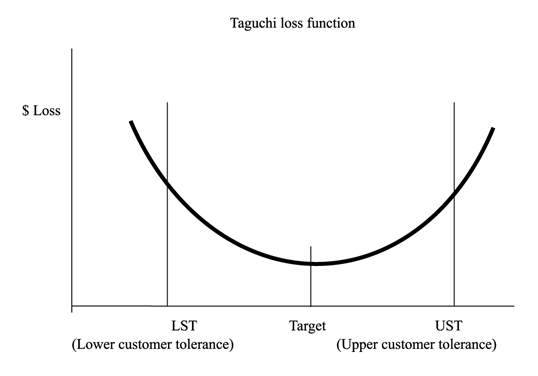Myth: Any outcome
between the customer specification limits considered as equal form the customer
perspective. For example customer queue time in a bank is between 15-30minutes,
as per this myth the customer who is been served at 15 minutes and another
customer at 30minutes is received the same quality from the bank perspective as
both of them are service within the agree time.
Reality: The
quality of service/ product will be of not equal from the customer/ society
perspective as it goes away from the target value even though it is within the
agreed specification limits.
Justification:
Taguchi one of the well-known statistician / engineer developed a
representation that measures the financial impact of loss to the society if the
product/service deviates from the target value. The representation is termed as
Taguchi’s Loss Function. In conventional methods the Cost of Quality is
measured considering the number of products rejected or reworked. In this
method it is difficult to differentiate the cost of quality if the two products
properties are within the specification limits but vary from each other.
From Taguchi’s perspective the loss function is as below.
The graph depicts the lross function as a deviation from the target value of a
product parameter. The parameter could be a diameter, color, density, hardness
any other critical parameter of a product. From the service perspective the
parameter could be cycle time, communication, responsiveness etc.
UST – Upper Specification Tolerance, LST – Lower
Specification Tolerance
Taguchi believes performance begins decreasing gradually as
the design parameter deviates from the target value even though the parameter
value is between the LST and UST. Therefore, Taguchi proposed that the
loss function be measured by the deviation from the target value. The loss
function is
L = K * (Y – M) ^ 2
·
L is the result value of the function, generally
measured in monetary units
·
Y measured value
·
M target value
·
K is a loss coefficient (Convert into monetary
values)
Example: A company produces a part that has a diameter of 0.5
inches + or - 0.01 inches of tolerance. Failure cost of a rejection is $45.00.
There are 30 units produced and the actual diameter is as below. Calculate and
compare the loss considering the convention method as well as Taguchi’s loss
function method.




No comments:
Post a Comment